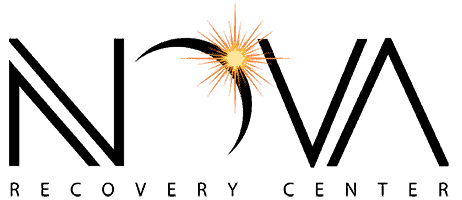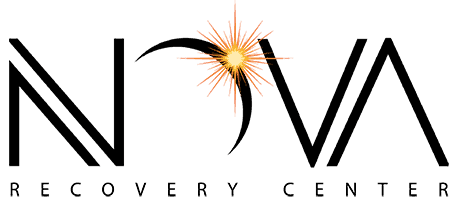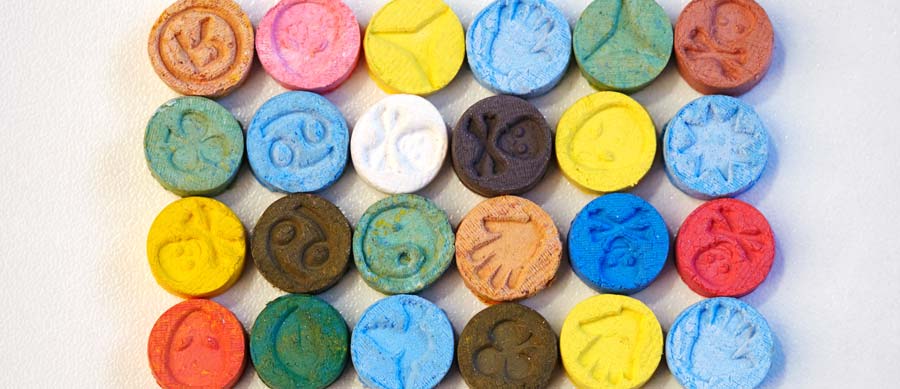Last Updated on September 29, 2025
Party Pills: The Dangerous Truth Behind Synthetic Highs
As authorities label more drugs as controlled substances, new synthetic alternatives keep appearing. People sell these as safer, legal versions of illegal drugs. Among these are party pills, often sold under names like Cok-N, Xplode, or XTC.
They promise happiness and energy, but they often have a mix of harmful chemicals. This can be extremely dangerous, especially for young adults.
What Are Party Pills?
Party pills are a psychoactive substance designed to mimic the effects of ecstasy, amphetamines, or psychedelic drugs like LSD. At first, many of these pills contained benzylpiperazine (BZP). After it was made a Schedule I illegal drug, manufacturers switched to unregulated synthetic drugs. Common current ingredients include:
- Caffeine
- Citrus aurantium
- Geranamine (geranium extract)
People often call these pills herbal party pills or “natural highs.” However, they are usually synthetic and may not have real natural ingredients. Lax regulation allows companies to sell them as dietary supplements, skirting oversight from the Food and Drug Administration.
What Do Party Pills Look Like?
Party pills come in many shapes and colors. Some resemble mints or candy to attract young people, making them appear harmless. This deceptive packaging can further conceal their status as a recreational drug.
Side Effects of Party Pills
Most party drug formulas act as stimulant drugs, affecting the central nervous system by speeding up bodily processes. Users may experience:
- Increased heart rate
- Dilated pupils
- Blurred vision
- Headaches
- Dizziness
- Anxiety
- Insomnia
- Nausea or vomiting
- Tremors
- Hallucinations
- Hyperventilation
- Seizures
- Life-threatening complications like respiratory failure
One of the biggest worries about party pills is that users often take more when the first effects take too long to start. This greatly increases the risk of overdose. Mixing party pills with alcohol and other drugs also significantly heightens danger, often leading to emergency room visits.
Are Party Pills Safe?
The short answer: No. Some people think that being “legal” means safe. However, many party pills contain designer drugs that researchers do not test for human use.
Manufacturers often change their formulas to meet regulations. Because of this, the contents of a single pill can vary a lot, even in the same batch.
Because of this, users face a wide range of term effects, including:
- Elevated anxiety
- Dependency
- Memory problems
- Mental illnesses
- Substance use disorder
Long-term use may also lead to issues like physical dependence, paranoia, or depression. Some pills can cause similar effects to ecstasy or meth but at a weaker potency, which encourages users to take high doses, increasing potential harm. Concerns about their legal status also exist. These substances often exist in unclear legal areas until authorities officially ban them.
What Are the Long-Term Effects of Party Pills?
While research is still emerging, current studies suggest serious long-term effects, especially with consistent use. These may include chronic insomnia, heart complications, or worsening mental health conditions. Researchers have linked party pills to an increased risk of developing substance abuse patterns or addiction.
Using party pills for an extended period can disrupt cognitive functioning and may alter emotional regulation. Long-term users often report symptoms related to psychoactive drug withdrawal and decreased quality of life. Moreover, repeated exposure to these substances can exacerbate underlying mental illnesses, particularly anxiety and depression.
Which Party Drug Is Safest?
Among recreational drugs, some argue that psilocybin mushrooms, a psychedelic drug, are less harmful. Psilocybin has shown promise in treating depression and PTSD under medical supervision. However, labeling any illicit substance as “safe” is misleading. Even drugs with medicinal potential, like ketamine or LSD, carry significant risks when used irresponsibly or without proper guidance.
Are Party Pills Legal?
The legal status of party pills is complex. Manufacturers often swap out banned substances with newly synthesized alternatives to avoid law enforcement scrutiny. Marketers may also promote these pills as herbal party pills or health supplements to evade regulatory intervention.
However, labeling something as a prescription drug alternative or supplement does not make it safe. Many of these products break FDA standards. They do this by making misleading claims or hiding ingredients.
Before using Sleeping Pills to counter the Effects of the Party Pills, read Can you Die From Sleeping Pills
Freedom Starts Here. Take Back Your Life Today.
Same-Day Admissions in Austin Available.
How Long Do the Effects Last?
Effects vary widely depending on the specific formula but typically last between four and six hours. However, because of unpredictable ingredients, some users experience adverse reactions much sooner—or much later—than expected. Combining party pills with alcohol consumption may intensify these reactions, a common practice among social users. If tablets sold as ecstasy are involved, see our guide to the MDMA comedown and recovery.
Common Types of Party Drugs
Here are several popular illicit drugs and synthetic substances often used at parties:
- Amyl nitrates (“poppers”): Inhaled for short but intense highs.
- Ketamine: Often misused for its dissociative effects.
- MDMA (ecstasy): Popular for its euphoric and empathogenic effects.
- Methamphetamine: A powerful stimulant drug known for binge cycles.
- Rohypnol: A notorious date rape drug used to sedate and manipulate victims.
- GHB: Another tasteless rape drug sometimes mixed into drinks.
- LSD: A potent hallucinogen with unpredictable effects.
- PCP: Known for intense hallucinations and aggressive behavior.
- Bath salts are man-made drugs that can act like meth or cocaine. Sellers often call them “plant food” or cleaners to hide their real purpose.
Emergency cases involving young adults, particularly those with a drug abuse history, often detect these substances. They highlight the ongoing issue of substance abuse within nightlife and party culture.
Behavioral Risks and Health Complications
Using party pills may also result in risky behavior, including impaired judgment, risky sexual activity, or aggression. The health risks aren’t just physical; users frequently experience emotional instability, disorientation, or paranoia. When people use these drugs in places with loud music, strobe lights, and lots of people, they can experience intense effects.
Some users even report experiencing long-term effects like memory loss and emotional blunting. These issues may persist well after stopping use, particularly in those with undiagnosed mental health conditions.
Other Outpatient Drug and Alcohol Rehab Locations
Can Party Pills Lead to Addiction?
Yes. Despite their “fun” marketing, party pills can lead to substance use disorder. When a user becomes dependent, stopping the drug can cause withdrawal symptoms. These may include fatigue, depression, or tremors.
Treatment for addiction to party pills typically involves:
- Medical detox under supervision
- Enrollment in structured treatment programs
- Therapy options including behavioral therapies
- Group and support groups for emotional reinforcement
- Comprehensive care addressing co-occurring mental illnesses
At this stage, recovery is possible, but it requires commitment and professional help.
Law Enforcement and Regulation
Law enforcement continues to crack down on synthetic designer drugs, but manufacturers frequently stay a step ahead. When authorities ban one type of drug, a new formula often takes its place. This ongoing cycle makes regulation difficult and reinforces the need for consumer education and awareness.
The Food and Drug Administration (FDA) has warned about some over-the-counter party pills. Stores sell these pills as dietary supplements, but they contain harmful chemicals. Despite their best efforts, many such products are still accessible online and in local shops.
Party Pills FAQ
What’s the hardest drug to withdraw from?
Severity depends on the person and pattern of use. Alcohol and benzodiazepines can have life-threatening withdrawal and require medical detox. Opioid withdrawal is rarely life-threatening but can be severely uncomfortable; stimulant withdrawal brings intense fatigue and depression.
What is the best medicine for drug withdrawal?
It depends on the substance:
- Opioids: Buprenorphine or methadone (best evidence), with adjuncts like clonidine/lofexidine, anti-nausea/anti-diarrheals.
- Alcohol: Benzodiazepines (symptom-guided protocols), thiamine, fluids/electrolytes.
- Benzodiazepines: Slow, supervised taper of a benzo; do not stop abruptly.
- Stimulants (cocaine/meth): Supportive care, sleep, nutrition; treat depression/anxiety.
Always seek medical supervision.
What are 6 common withdrawal symptoms of opiate (opioid) use?
Anxiety/irritability, muscle and bone aches, runny nose/yawning/tearing, stomach cramps/diarrhea, nausea/vomiting, gooseflesh/chills, plus insomnia and dilated pupils.
How many days does drug withdrawal take?
- Short-acting opioids (heroin, oxycodone): ~3–7 days acute; sleep/mood issues can linger.
- Long-acting opioids (methadone): 7–14+ days acute.
- Alcohol: 3–7 days acute; risk of seizures/DTs in first 72 hours.
- Benzodiazepines: Weeks to months (must taper).
- Stimulants: Days to weeks of low mood and fatigue.
Timelines vary—professional care makes withdrawal safer and more comfortable.
What were party pills made of?
“Party pills” have been marketed with many formulas. Historically they’ve included BZP/TFMPP (piperazines), synthetic cathinones (“bath salts”), and high doses of caffeine, synephrine/ephedra, DMAA, or mixed herbal stimulants. Street pills are frequently adulterated or mislabeled, so contents and potency are unpredictable and risky.
Do “after-party” pills work?
Most “recovery” or hangover pills rely on caffeine, electrolytes, vitamins, or herbs. Evidence that they speed recovery is limited. Hydration, food, and sleep help more—and they do not prevent harm from alcohol or other drugs.
What medications can give you a buzz?
We can’t help with misusing medicines to get high. Using any prescription or OTC product for intoxication is dangerous and often illegal, with real risks of overdose, injury, and addiction. If you’re chasing a buzz to cope, consider talking with a clinician or reaching out for support.
What do “party smart” pills do?
They’re sold as focus/energy enhancers (“nootropics”) but often contain stimulants (caffeine, yohimbine) and unregulated herbs. Claims are unproven, labels may be inaccurate, and combining them with alcohol or other drugs can cause palpitations, anxiety, or dangerous spikes in blood pressure.
What is another name for party drugs?
Common terms include club drugs, rave drugs, or festival drugs. Examples people may encounter: MDMA/ecstasy, ketamine, GHB/GBL, cocaine, nitrous oxide, synthetic cannabinoids (K2/Spice), and synthetic cathinones (“bath salts”). Names and contents are not reliable.
What is the most popular drug pill?
It varies by place and time. MDMA (ecstasy/Molly) is often sold as pressed pills or capsules, but many tablets are not pure MDMA—they may contain methamphetamine, bath salts, or other adulterants.
What are the “big 3” drugs?
In nightlife settings, people often refer to MDMA, ketamine, and cocaine. This isn’t an endorsement—each carries serious health risks, especially when mixed.
What is “happy pills” a street name for?
Colloquially it can refer to antidepressants (like SSRIs) or, in party contexts, MDMA. Slang is inconsistent; never rely on a name to judge safety.
Addiction Treatment for Party Pill Use
If you or someone you value is having trouble with party pills or other drugs, Nova Recovery Center can help. They offer proven treatment options for addiction. We design our personalized treatment programs to meet each client’s needs. This is true whether you have a long history of drug abuse or are just facing challenges.
From detox to inpatient and outpatient services, we provide long-term support and holistic care that includes:
- Individual therapy
- Group sessions and support groups
- Dual diagnosis treatment for co-occurring mental health conditions
- Relapse prevention strategies
- Family involvement and aftercare
Getting help doesn’t must be overwhelming. Contact us today and take the first step toward recovery.


